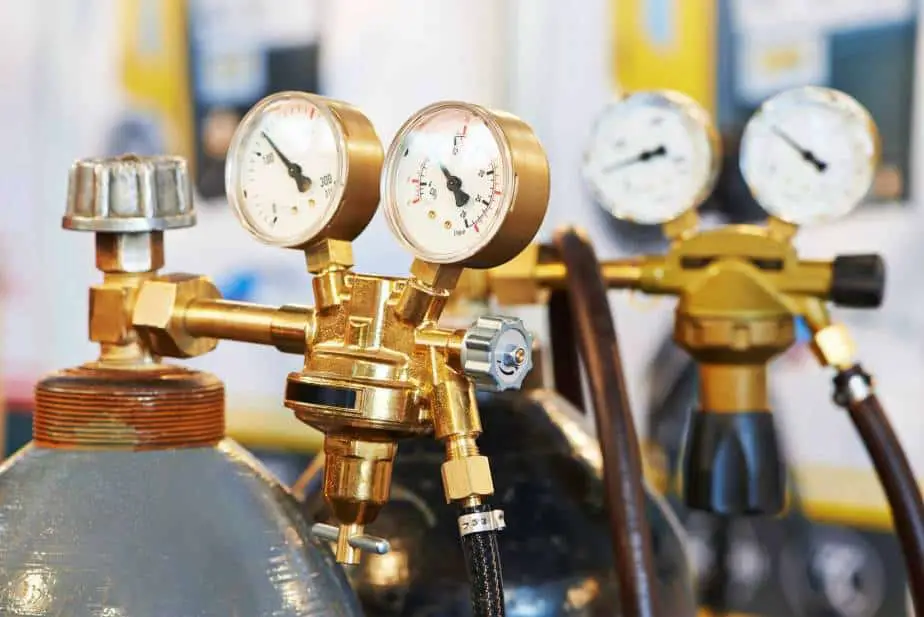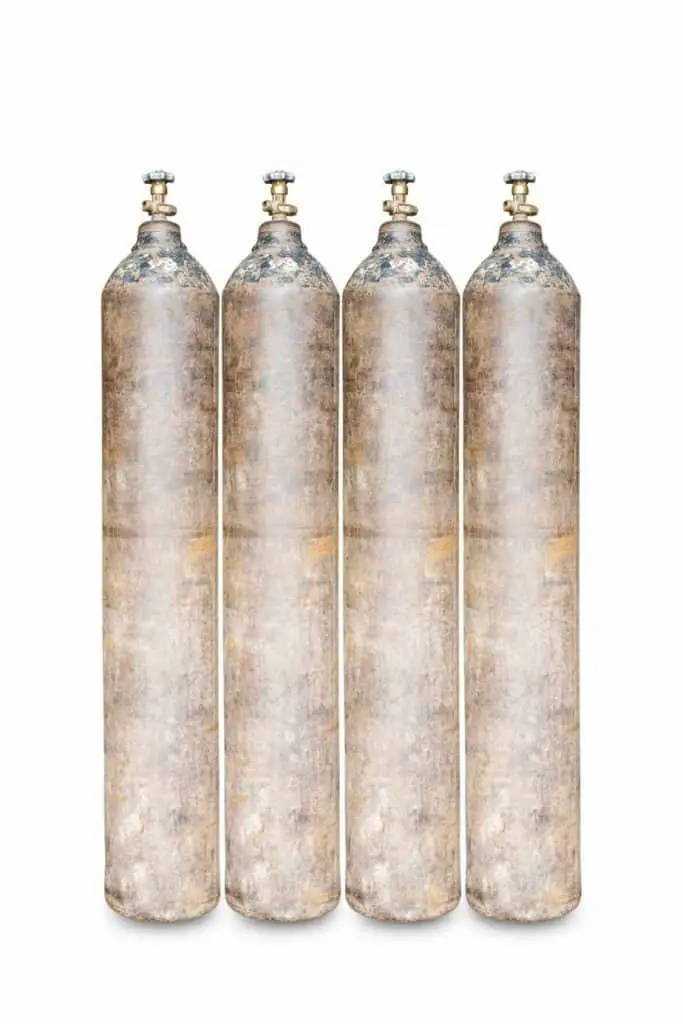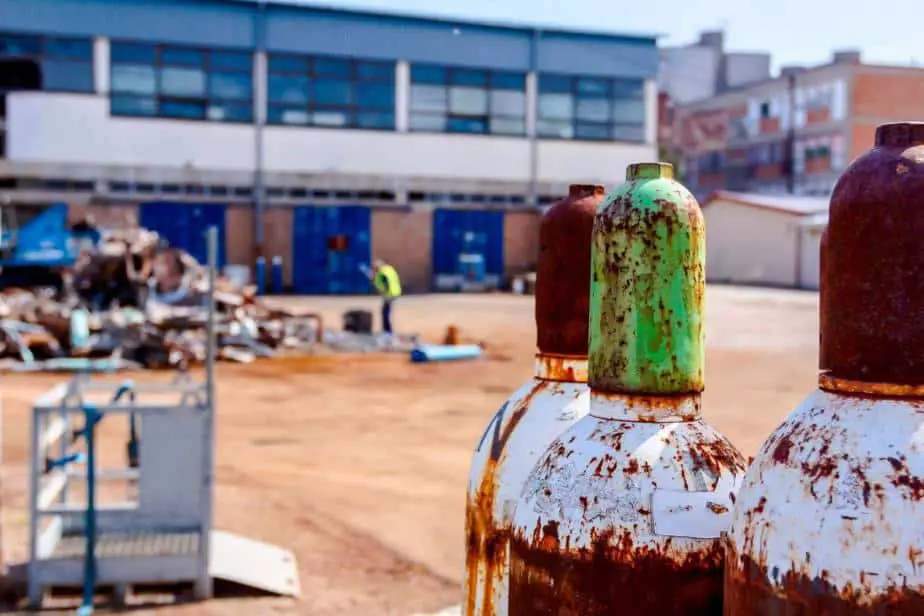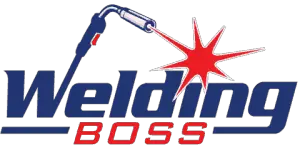This post contains affiliate links to products, services, or education. We may receive a commission for purchases made through links.
When it comes to welding in the field or in the shop, having the right sized tank for the job is important. The type of jobs that can be undertaken by people with welding rigs can range from a little extra pocket money to a new home for a deserving family. If you aren’t sure what size tank you need for specific jobs, never fear.
What size welding tanks do I need? For MIG and TIG welding, it is suggested that you buy a cylinder between 40 to 125 cubic feet. Running your welder with a tank this size gives you between 10 to 40 hours of work time.
There are different types of gas, and these different gases can be used for different types of welding. That might sound a bit redundant, but trust me when it comes to welding, knowing all you can is an asset. Continue reading for a breakdown of what size welding tank you need for the task at hand.

What Are The Common Size Welding Tanks?
When you think of a tank for welding, you should be thinking of long cylindrical tanks that you see around job sites and garages across the country. These are made from either steel or aluminum and can come as large as 57in tall and weighing over 140lbs.

Some of the gases that are used in welding are:
- Oxygen
- Acetylene
- Carbon dioxide
- Argon
- Helium
- Propane
- Butane
Some of these are used as cutting agents and others as shielding agents. Not only does welding require gases to work, but it can produce some nasty gases as well. Make sure to wear the appropriate gear for welding and breathing.
Check out our recommended respiratory equipment here.
The correct sized gas cylinder you need depends on the job you have accepted. The size and cu ft of each tank of argon are as follows:
- Tank-R – named the 20 and holds 21 cu ft is 5 inches in diameter and weighs 17 pounds.
- Tank RR – is the standard 40 and has a 44 cu ft capacity. It weighs 25 pounds and is about seven inches in diameter.
- Tank Q1 – is a 22-pound tank that is 21 inches high and has a 65 cu ft capacity. It weighs only 21lbs and comes in the standard 7in diameter cylinder.
- Tank Q – The 80 cu ft model is capable of holding 83 cu ft of gas and weighs 73 pounds. It is 32 inches tall and 7 inches around.
- Tank S – Tank S comes in two different sizes 125 cu ft and 150 cu ft. They hold between 130 and 155 cu ft of gas and weigh between 60 and 70 pounds.
- Tank K – Tank K usually goes by the name 250. It holds 251 cu ft of gas and weighs a whopping 150lbs. It comes in a bit larger cylinder, 8.5 inches, and stands just above four feet tall.
- Tank T – T is the largest-sized tank and is called the 330. It holds 335 cu ft of gas and is in a much larger 9.2 in diameter cylinder. It weighs 170lbs and is four and a half feet tall.
How Long Will A 40/80cf Argon Tank Last?
One of the essential things when regarding a time limit on tank usage is the regulator setting. The regulator is the flow valve that keeps the pressure running at the same level, no matter if there is a change in the source pressure. Look at it this way; the regulator keeps your torch going at the same rate whether there is 8000psi in the tank or 80psi.
If you have a regulator set to 10 cf/h on an 80cf tank, you can expect about 8 hours of work, and a 40cf tank would last about four hours with the same set regulator flow. On a tank K, that would equate to 25 hours (and so on, and on, and on).
How Do You Prepare An Argon Tank For Welding?
When it comes to setting up a workspace for welding, there is nothing more important than safety. Welding heats metal to melting temperature. Imagine what it will do to human flesh! Not only are there extreme temperatures to deal with, but airborne fumes and toxins as well.
The most important thing to control is the gas tanks. The contents are already under pressure, and when a regulator comes off a cylinder, it will fly around the room like a bottle rocket with no stick. Some rules to keep in mind when creating your workspace are:
- Keep your distance
- Bottle caps
- Chain them down
Keep your distance
The high temps created by welding can puncture a tank. When a container is punctured this way, it will explode and leave nothing standing for yards in every direction—the most dangerous thing you can encounter while welding is an explosion. Mount tanks at least five feet away vertically stored. Keeping them in the vertical position, and secured to the wall with a chain or rail, will keep them from becoming dangerous missiles.
Capping The Tank

When not in use, the large metal caps that cover the tops of the cylinders should be in place. The cap helps prevent an accident that would unleash the canister and wreak havoc on your workers and shop area.
Another reason to keep the caps in place is to prevent a slow leak. While the gases, argon, and CO2 are inert, they could push lighter oxygen from the room when they escape from the cylinder. An air displacement would suffocate the workers present.
Chain them down
When placing your cylinder, you should make sure that it is chained or held against the wall by something stable and non-flammable. A toppled bottle is a thing of nightmares, and an unmovable place to store and secure them is a number one priority. Against a load-bearing wall and in an area with very little foot traffic is the prime location to seek out.
Best Tanks For Welding
125cu ft Generic by Webfabulous
This model is the largest tank size that you would need for any around the home chore. All these tanks come with a 10-year hydro test stamped into the canister. It is also safe for DOT transportation and can be delivered to any of the lower 48 states. They are tested for psi efficiency when they leave the factory and rated at the industry standard of 2,015psi.
80cu ft Generic by Titus Welding Supply
Like the other tank, this one is a generic that is shipped filled and ready to work. This model is a smaller one that can be moved around if need be. It weighs only 35lbs and is less than three feet tall. Smaller tanks like this one can be wheeled around on a cart for construction or home building.
40cu ft Generic by Webfabulous
This unit is the smallest sized tank that you would need for welding. It is only 40cu ft, which means that it weighs only seven pounds. If running a regulator at 10cf/h, you can get around 4 hours of work with this. Mainly these are used for on the go repairs and portability. Though dangerous to transport, some high-end carts ease most of those fears.
How Much Does A Tank Of Argon Cost?
The price you are going to pay for argon depends on how much you need. There are some full tanks listed on Amazon that range from nearly $400 for 120cu ft and less than $250 for 40cu ft.
The funny thing about buying gas is that the more you buy, the cheaper it gets. For instance, in the example I used above, you would get three times as many hours for less than half what you would pay for a smaller tank. This means that you can save money by purchasing in bulk.
Transporting Your Tank
This is an often overlooked step when rookies go to buy a tank. Getting it in and out of the truck is one thing. But how do you transport it?
A hand-cart of course!
We recommend these hand-carts to save your back, and keep you as safe as possible.
The size of the tank will need to be taken into account before you purchase your cart. You will also need to make sure that your tank is secure. The last thing you want is this:
If you mishandle a tank, they move like missiles. You don’t want anyone near when it falls, or god forbid someone knocks the top wrong.
How to TIG & MIG Weld With Your New Gas Cylinder
Mig Welding with your gas cylinder
I recommend you start by reading our article on what MIG welding is and the basics to it by clicking here.
I like to run 25% CO2 and 75% Argon when MIG welding. Check out some recommended tanks for this here.
Here’s a great intro video on what MIG welding is and how to go about it.
TIG welding with your gas cylinder
We have a great informational article about what TIG welding is and it’s basics (click here to check that out first).
Firstly, you’ll want to run 100% argon to TIG weld.
Tungsten Inert Gas welding (TIG) is used for more intricate welding jobs. It operates on the same principle as MIG welding, with a few little differences thrown in. Some learned to ‘stick weld’ in shop class, and this is just a beefier version that can weld many different types of metal.
The steps to TIG weld are:
- Get an edge
- In the cradle
- Set the welder
- Gas it up
- Prepare surface
- Work
So what size gas tank do I really need?
You may save a penny by getting a larger tank than you really need, but considerations like portability, space, and access all should play into your decision. After all, if you can’t lift it, how are you going to refill it? Do you really want to cart a 150lb tank out of the truck and across a field? Do you have the right equipment to store a 330 safely?
Think about where you are going to need it, how much you really use it, and do the cost benefit analysis from there. Be reasonable. You can always upgrade later if you need a larger tank.



